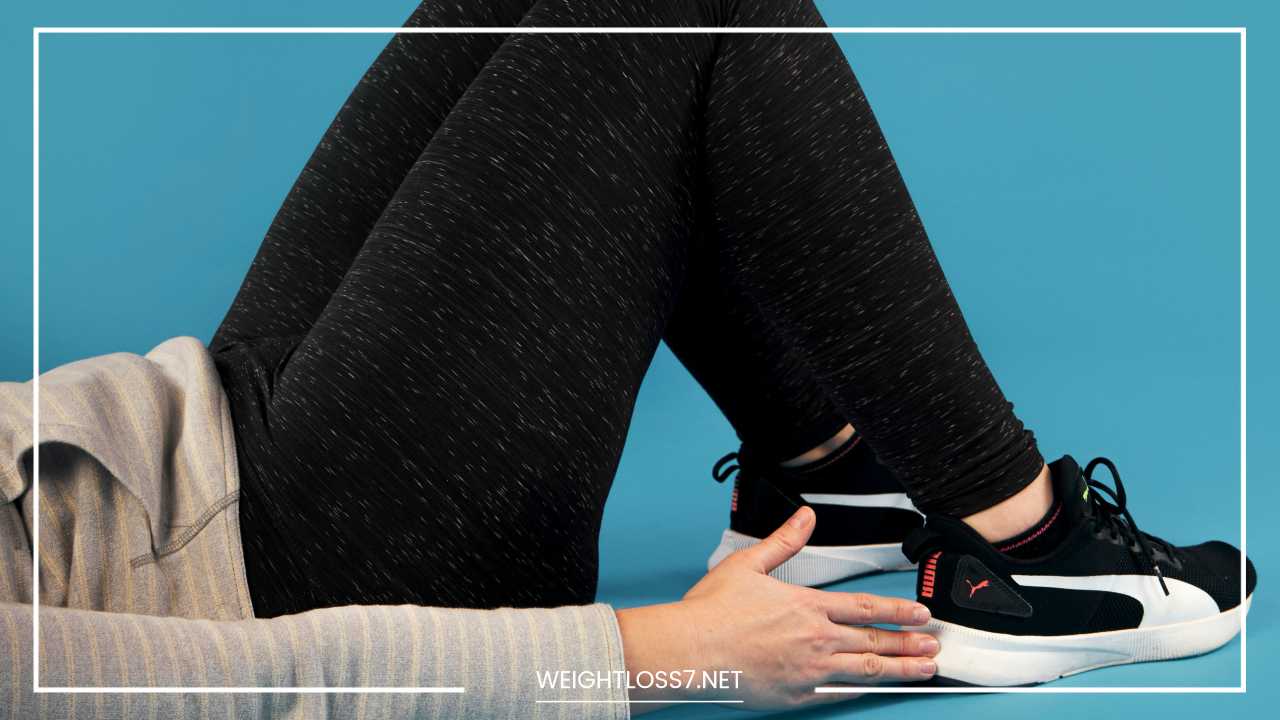How to Get Rid of Thigh Fat

Get Rid of Thigh Fat
Shedding Light on Thigh Fat: A Comprehensive Guide to Toning and Strengthening
Thighs are powerhouse muscles that propel us through life, allowing us to walk, run, jump, and climb. They deserve all the love and attention we can give them.
But sometimes, unwanted thigh fat can leave you feeling self-conscious in shorts, swimwear, or even certain types of pants.
This comprehensive guide dives deep into the world of thigh fat, exploring the science behind its formation, effective methods to achieve toned and sculpted legs, and the importance of a holistic approach to well-being.
Understanding the Science of Thigh Fat:
Let’s dispel a common myth: spot reduction, the idea of targeting fat loss in a specific area, isn’t quite achievable. However, there are fantastic strategies to reduce overall body fat percentage, which will naturally lead to a reduction in thigh fat. Here’s a breakdown of the two main contributors to the appearance of your thighs:
- Fat: This layer of tissue sits beneath the skin. Reducing overall body fat percentage through diet and exercise will lead to a decrease in thigh fat.
- Muscle: Strong, toned muscles contribute to a sculpted and defined look. Building muscle mass in your thighs, particularly lean muscle, creates a leaner appearance and improves overall function.
Genetics and Body Composition:
It’s important to acknowledge that genetics play a role in fat distribution and body composition. Some people naturally carry more fat in their thighs, while others may store more in their belly or arms.
However, regardless of your genetic predisposition, a healthy lifestyle focused on a balanced diet and regular exercise can significantly improve the appearance and function of your thighs.
Cellulite: A Common Concern:
Cellulite, the lumpy, dimpled appearance on the skin, often on the thighs and buttocks, is a common concern, especially for women. It’s important to understand that cellulite is not necessarily caused by excess fat.
It’s a structural issue related to connective tissue and fat distribution beneath the skin. While targeted exercises and topical treatments might slightly improve the appearance of cellulite, the most effective approach remains reducing overall body fat percentage.
The Two-Pronged Approach: Diet and Exercise
The key to tackling thigh fat lies in a two-pronged approach: a healthy and balanced diet combined with a consistent exercise routine.
Diet:
- Calorie Control: Aim for a slight calorie deficit. This means burning more calories than you consume, leading to weight loss and fat reduction. Consult a registered dietitian or healthcare professional for personalized calorie recommendations based on your age, weight, activity level, and goals.
- Macronutrients: Focus on a balanced diet rich in whole, unprocessed foods. Prioritize fruits, vegetables, whole grains, and lean protein sources like fish, poultry, beans, lentils, and tofu. These foods provide essential nutrients, keep you feeling satiated for longer, and help regulate blood sugar levels, reducing cravings and preventing overeating.
- Healthy Fats: Don’t fear healthy fats! They play a crucial role in hormone regulation, cell function, and satiety. Include healthy fats like avocado, nuts, seeds, and olive oil in your diet.
- Fiber: Fiber promotes digestive health and keeps you feeling full. Aim for high-fiber foods like fruits, vegetables, whole grains, and legumes.
- Mindful Eating: Pay attention to hunger and fullness cues. Eat slowly, savor your food, and avoid distractions while eating. This mindful approach can help you avoid overeating and make healthier food choices.
Exercise:
- Cardio: Regular cardio exercises are excellent calorie burners that contribute to overall fat loss. Aim for at least 150 minutes of moderate-intensity cardio or 75 minutes of vigorous-intensity cardio per week, as recommended by the CDC. Activities like brisk walking, running, swimming, cycling, dancing, or stair climbing are all excellent choices.
- Strength Training: Building muscle mass through strength training is crucial for sculpting toned thighs. Strength training exercises like squats, lunges, leg presses, deadlifts, and calf raises not only burn calories during the workout but also help you burn more calories at rest due to increased muscle mass. Aim for strength training exercises involving your lower body at least twice a week.
Exercise Selection for Sculpted Thighs:
Now, let’s delve into specific exercises that target different areas of your thighs:
Inner Thighs:
- Sumo Squats: Stand wider than shoulder-width apart with toes pointed outwards. Squat down, keeping your back straight and knees tracking your toes. This exercise effectively targets the inner and outer thighs.
- Side lunges: Step sideways with one leg, lowering your hips until your front knee is bent at a 90-degree angle. Push back to starting position and repeat on the other side. This exercise targets your inner and outer thighs, glutes, and helps improve hip stability.
- Plié Squats: Stand with your feet turned outwards at a 45-degree angle, slightly wider than shoulder-width apart. Squat down as if sitting in a chair, keeping your back straight and knees tracking your toes. This variation emphasizes the inner thighs and glutes.
Outer Thighs:
- Clamshells: Lie on your side with knees bent and stacked on top of each other. Lift your top knee upwards, keeping your feet together and heels touching, creating a “clamshell” motion. Engage your core throughout the movement.
- Lateral lunges with leg raises: Perform a standard side lunge, then as you push back up, lift the standing leg slightly off the ground for an added outer thigh challenge.
- Banded Monster Walks: Loop a resistance band around your ankles just above your shoes. Stand with feet hip-width apart and walk sideways, taking small steps, maintaining tension on the band throughout the movement. This exercise targets the outer thighs and helps improve hip stability.
Hamstrings and Quads:
Don’t forget the hamstrings and quadriceps! These muscles run along the back and front of the thighs, respectively, and contribute significantly to their overall appearance and function.
- Romanian Deadlifts: Stand with feet hip-width apart, hold dumbbells (or weights of your choice) in front of your thighs. Keeping your back straight and core engaged, hinge at the hips and lower the weights towards the ground, maintaining a slight bend in your knees. This exercise targets your hamstrings and glutes.
- Walking Lunges: Take a large step forward with one leg, lowering your body until both knees are bent at 90-degree angles. Push back up to the starting position and repeat with the other leg. Walking lunges work your quads, hamstrings, and glutes.
Progression and Intensity:
As you become stronger, it’s important to gradually increase the intensity of your workouts to keep challenging your muscles and promoting further progress. Here are some ways to do that:
- Increase Weight or Resistance: Once you can comfortably perform an exercise with a certain weight or resistance for the recommended number of repetitions (reps) and sets, consider increasing the weight or resistance by a small amount (e.g., 5-10 pounds) to keep challenging your muscles.
- Increase Reps or Sets: If increasing the weight isn’t an option initially, you can also increase the number of repetitions (reps) or sets you perform per exercise. Aim for 8-12 reps per set for building muscle and strength.
- Decrease Rest Time: Shorten your rest periods between sets to increase the overall intensity of your workout. However, ensure you’re resting long enough to maintain proper form during the next set.
- Try Advanced Variations: Once you’ve mastered the basic exercises, explore more challenging variations like single-leg squats, Bulgarian split squats, or jump squats.
Remember: Consistency is key! Aim for regular exercise, at least 3-4 times per week, with a rest day in between to allow your muscles to recover. Listen to your body and take rest days when needed.
Lifestyle Tweaks for Sustainable Change:
Building a healthy lifestyle goes beyond just diet and exercise. Here are some additional tips to promote lasting change and support your thigh-toning goals:
- Sleep: Adequate sleep (around 7-8 hours per night) is crucial for overall health and weight management. When you’re sleep-deprived, your body produces more ghrelin, the hunger hormone, and less leptin, the satiety hormone, leading to increased cravings and potential overeating.
- Stress Management: Chronic stress can lead to weight gain and hinder your fitness efforts. Find healthy ways to manage stress, such as yoga, meditation, deep breathing exercises, spending time in nature, or listening to calming music.
- Strength Training Form: Proper form in strength training exercises is crucial to maximizing results and preventing injury. Consider consulting a certified personal trainer for personalized guidance, especially for beginners.
- Hydration: Staying hydrated is essential for overall health and can also aid in weight management. Aim to drink plenty of water throughout the day.
- Mindset: Focus on overall health and well-being, not just the number on the scale. Celebrate non-scale victories like increased strength, improved endurance, and a more confident you.
Beyond the Scale: Embracing a Holistic Approach
It’s important to remember that your worth is not defined by your thigh size. Focus on embracing a healthy lifestyle that promotes overall well-being. Celebrate your body’s strength and capabilities. Here are some additional thoughts to consider:
- Body Positivity: Surround yourself with positive influences and media that promote body positivity and celebrate all body shapes and sizes.
- Strength Training Benefits: Strength training offers a multitude of benefits beyond aesthetics. It improves bone density, reduces the risk of injuries, enhances balance and coordination, boosts metabolism, and even improves cognitive function.
- Focus on Progress, Not Perfection: Fitness is a journey, not a destination. There will be setbacks and days when motivation dips. Celebrate your progress, no matter how small, and focus on building sustainable habits over time.
- Find Activities You Enjoy: Exercise shouldn’t feel like a chore. Find activities you genuinely enjoy, whether it’s dancing, hiking, playing a sport, or taking a group fitness class. This will make you more likely to stick with your routine in the long run.
- Celebrate Your Strength: Thighs are powerful muscles that allow us to walk, run, jump, and navigate the world. Focus on appreciating the strength they provide and the amazing things your body can do.
Additional Tips and Considerations:
- Warm-up and Cool-down: Always perform a proper warm-up before your workout to prepare your muscles and joints for exercise. Similarly, cool down with static stretches after your workout to improve flexibility and reduce muscle soreness.
- Listen to Your Body: Don’t push yourself through pain. If you experience any discomfort, stop the exercise and consult a healthcare professional.
- Consult a Doctor: Before starting any new exercise program, especially if you have any pre-existing health conditions, consult with your doctor or a registered healthcare professional.
- Professional Guidance: If you’re new to exercise or need help creating a personalized workout plan, consider working with a certified personal trainer. They can provide guidance on proper form, exercise selection, and progression to ensure you reach your goals safely and effectively.
Final Word:
Achieving sculpted thighs is a journey that involves a combination of healthy eating, regular exercise, and a positive mindset.
By embracing a holistic approach to well-being and focusing on your overall health, you’ll not only achieve your physical goals but also cultivate a sense of empowerment and confidence that radiates from the inside out.
Remember, your thighs are strong and beautiful! Celebrate their capabilities, take care of them, and embrace the journey towards a healthier, happier you.

















